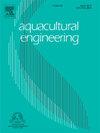Development and evaluation of reference feed intake models for meagre (Argyrosomus regius)
IF 3.6
2区 农林科学
Q2 AGRICULTURAL ENGINEERING
引用次数: 0
Abstract
The aim of the study was to identify a basic reference feed intake model to facilitate understanding of the impact of temperature as the key environmental factor, along with body weight and dietary composition. These basic models should provide the baseline for further research to advance precision farming practices and support efficient production for meagre (Argyrosomus regius). Several reference models, with different levels of complexity, were built using data from scientific publications and feeding tables, followed by evaluating 27 different models using various fitting methods. Each model's mean absolute percentage error was estimated through repeated 5-fold cross-validation (with n = 200 iterations). Models were divided into four categories based on the inclusion of temperature and diet composition parameters: simple feed-independent models, complex feed-independent models, simple feed-dependent models, and complex feed-dependent models. The best model from each category was identified, followed by an assessment of the overall best. Consistent with dynamic energy budget theory, models using a fixed body weight exponent of 2/3 demonstrated better fit. Feed-dependent models incorporating lipid levels outperformed feed-independent ones. Additionally, simpler models with temperature parameters effectively predicted feed intake at optimal temperatures, while more complex models predicted intake better above the thermal optimum. The reference models selected in this study can be applied to estimate feed requirements over time for production or experimental trials, benchmark feeding to isolate the effect of other variables, support growth models and alternative feeding tables, and provide decision support.
开发和评估肉牛(Argyrosomus regius)的参考采食量模型
本研究旨在建立一个基本的参考采食量模型,以便更好地了解温度、体重和饲粮成分作为关键环境因素的影响。这些基本模型应该为进一步研究提供基础,以促进精准农业实践和支持贫(Argyrosomus regius)的高效生产。利用科学出版物和喂养表中的数据,建立了几个不同复杂程度的参考模型,然后使用各种拟合方法对27个不同的模型进行了评估。通过重复的5倍交叉验证(n = 200次迭代)估计每个模型的平均绝对百分比误差。根据温度和日粮组成参数将模型分为4类:简单饲料独立模型、复杂饲料独立模型、简单饲料依赖模型和复杂饲料依赖模型。从每个类别中确定最佳模型,然后对总体最佳模型进行评估。与动态能量收支理论一致,采用固定体重指数2/3的模型拟合效果较好。含脂水平的饲料依赖模型优于饲料不依赖模型。此外,具有温度参数的简单模型能有效预测最佳温度下的采食量,而更复杂的模型能更好地预测高于最佳温度的采食量。本研究选取的参考模型可用于估计生产或试验所需的饲料随时间的变化,可用于隔离其他变量影响的基准饲喂,可用于支持生长模型和替代饲养表,并可提供决策支持。
本文章由计算机程序翻译,如有差异,请以英文原文为准。
求助全文
约1分钟内获得全文
求助全文
来源期刊

Aquacultural Engineering
农林科学-农业工程
CiteScore
8.60
自引率
10.00%
发文量
63
审稿时长
>24 weeks
期刊介绍:
Aquacultural Engineering is concerned with the design and development of effective aquacultural systems for marine and freshwater facilities. The journal aims to apply the knowledge gained from basic research which potentially can be translated into commercial operations.
Problems of scale-up and application of research data involve many parameters, both physical and biological, making it difficult to anticipate the interaction between the unit processes and the cultured animals. Aquacultural Engineering aims to develop this bioengineering interface for aquaculture and welcomes contributions in the following areas:
– Engineering and design of aquaculture facilities
– Engineering-based research studies
– Construction experience and techniques
– In-service experience, commissioning, operation
– Materials selection and their uses
– Quantification of biological data and constraints
 求助内容:
求助内容: 应助结果提醒方式:
应助结果提醒方式:


